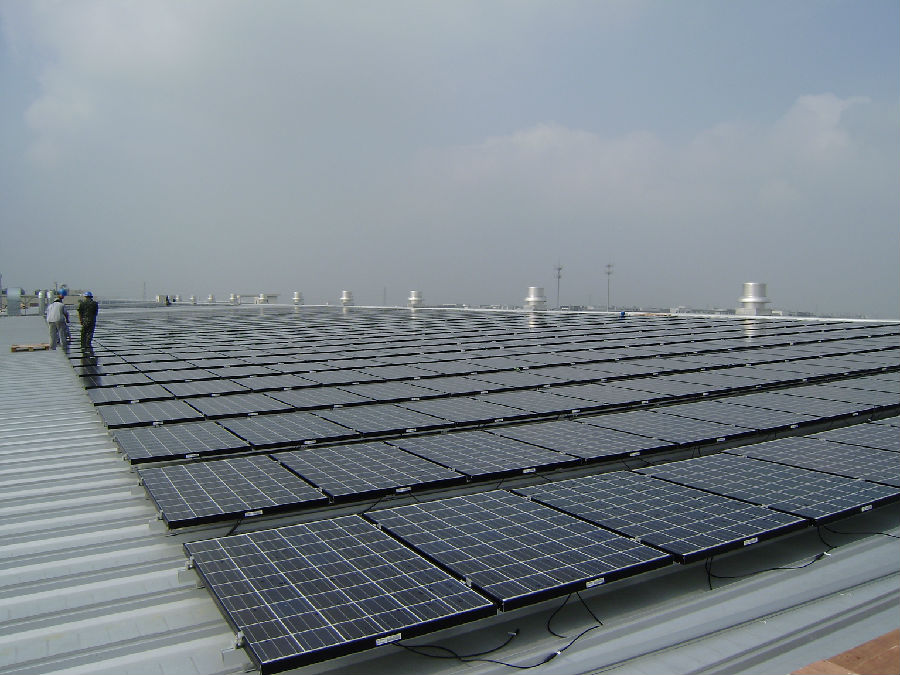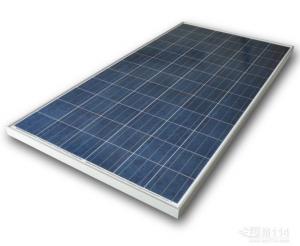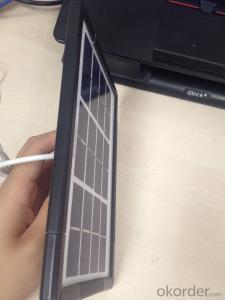Mono-Crystalline Solar Panels for Farms - 72 Series
- Loading Port:
- Ningbo
- Payment Terms:
- TT or LC
- Min Order Qty:
- 2000 watt
- Supply Capability:
- 2000000 watt/month
OKorder Service Pledge
OKorder Financial Service
You Might Also Like
1. 72 Series Monocrystalline Solar Module
OKorder is offering high quality 72 Series Monocrystalline Solar Modules at great prices with worldwide shipping. Solar modules are the core of solar power systems and our Monocrystalline solar modules consist of highly efficient crystalline silicon solar cells, premium white cloth grain toughened glass, EVA, transparent TPT backboard and a composite aluminum alloy frame. These Monocrystalline solar modules are perfect for converting solar energy into electric energy, or charging storage batteries.
2. The intended use of 72 Series Monocrystalline Solar Module
Our 72 Series Monocrystalline Solar Modules are ideal for:
Power generation
Lighting
3. The advantages of 72 Series Monocrystalline Solar Modules
Not only are OKorder's 72 Series Monocrystalline Solar Modules of the highest quality and reliability, we are able to quickly ship orders within 20 days of receiving a deposit or original L/C.
4. Main features of 72 Series Monocrystalline Solar Modules
Extended service life
Durable strength and compression resistant
High energy conversion efficiency
Reliable performance
5. Mono-crystalline solar module Images




6. Certificates of Mono-crystalline solar module

7.Specification:
1) Mono-crystalline solar module mechanical parameter

2) Mono-crystalline solar module Electrical Characteristics

3) Mono-crystalline solar module component diagram

4) Mono-crystalline solar module IV curve

8. FAQ:
Q1: Why buy Materials & Equipment from OKorder.com?
A: All products offered byOKorder.com are carefully selected from China's most reliable manufacturing enterprises. Through its ISO certifications, OKorder.com adheres to the highest standards and a commitment to supply chain safety and customer satisfaction.
Q2: What is a solar PV module?
A: A solar PV module consists of many solar cells that are connected together (typically in series) and packaged in a frame (typically made of aluminum).
Q3: What are the advantages and disadvantages of monocrystalline solar PV modules?
A: Monocrystalline solar PV modules are the most efficient type of solar PV modules, with the exception of CdTe thin film solar PV modules. As a result, monocrystalline solar PV modules are more expensive when compared to almost all other types of solar PV modules.
Q4: What is the typical service life of a solar PV module?
A: The typical life of a PV module is 25 years. However, superior quality PV modules boast service lives up to 35-40 years (electrical generating capacity is often reduced, however by that point).
Q5: What certifications do you have?
A: We are specialized in the photovoltaic field, with a focus on solar cells, modules and photovoltaic power generation systems. We employ advanced monocrystalline and polycrystalline silicon solar cell manufacturing equipment, producing highly efficient and reliable products sold in Europe, the Americas and Australia. Our company has passed ISO9001 quality management system certification, and our products have obtained TUV-IEC, CE, UL certification.
Q6: How do we guarantee the quality of our products?
A: We have established an advanced quality management system which conducts strict quality tests at every step, from raw materials to the final product. At the same time, we provide extensive follow-up service assurances as required.
Q7: How long can we receive the product after purchase?
A: Within three days of placing an order, we will begin production. The specific shipping date is dependent upon international and government factors, but is typically 7 to 10 workdays.
- Q: So my buddy and I have an idea to start a small Solar Installation business. Small as in I am only willing to do one weekend a month and two weeks a year(I know it sounds like the reserves). These are my specific question:) What is the average cost in the U.S. to have Solar Panels installed?2) What is the average cost in the state of Hawaii to install Solar Panels?3)Is this a worth while venture? (There's a good chance i'm going to ignore this one anyways LOL!)4)How long does it take to install a photovoltaic solar panel?5)How long does it take to install a hot water solar panel?6)Besides the obvious, what permits are needed to get our start?7)What education or Cert. is needed?8)Average time to start up?If there is any other information you believe pertinent to this subject that I didn't ask directly, please share. Thank you for your help in advance!
- the fee relies upon on many aspects. What length is your relatives and how a lot warm water do you take advantage of? Which route does your position roof face? Its perfect and most inexpensive once you've component to roof that faces South. What form of cutting-edge warm water gadget do you've and how a lot artwork will be necessary to connect it to image voltaic. the position precisely is your position? What u . s . a ., what component to the country, what different aspects want to be considered like timber, different homes and so on.? What form of image voltaic panel do you want - flat panel or evacuated tubes? Tubes are extra intense priced yet provide extra warm water for an prolonged era on a daily basis. visit the Retscreen cyber web website. Its subsidized by the Canadian authorities and has diverse information for layout and costing of image voltaic, wind or hydro kit everywhere interior the international. It has instantaneous links to kit manufacturers, climate documents and each thing you'll want depending on the area of your position. it could also make an entire fee earnings calculation for you. That way you could attitude contractors with finished preparation and able to make an suggested negotiation over expenditures.
- Q: I'm re-doing my roof. Is it workable?Can I get a government grant or something to put solar panels on my roof?I know they did something like that for windows.
- I take it you are in the uk,no grants available that I know of .Affordability is down to how wealthy you are,cost effectiveness? you may!!!recover the cost over about 20 to 30 years depending on your power use,against what you would pay a power Co. Worth while? frankly just another scheme to prise money out of the public,in the name of ecology or cost saving.
- Q: How do solar panel power systems work?
- There are two kinds of solar panel power systems, one is on-grid solar power system, the other is off-grid solar power system. The on-grid solar power system: the solar panel convert sunlight into DC electric, and the DC electric is converted into AC electric by inverter, one part supply for the household load, the other supply to power grid. The off-grid solar power system: the solar panel convert sunlight into DC electric, and charge for the battery or supply for the DC load by controller, if have AC load, it need a inverter to convert DC into DC.
- Q: How do solar panels affect the local job market?
- Solar panels can have a positive impact on the local job market by creating new employment opportunities. The installation, maintenance, and manufacturing of solar panels require skilled and unskilled workers, thus stimulating job growth in the renewable energy sector. Additionally, the shift towards solar energy can lead to the creation of new businesses and industries, further contributing to job creation and economic development in the local community.
- Q: How do solar panels affect the overall comfort of a building?
- Solar panels can positively impact the overall comfort of a building by reducing energy costs and providing a sustainable source of power. By generating electricity from sunlight, solar panels can help to offset the use of traditional fossil fuel-based energy sources, resulting in lower electricity bills. Additionally, solar panels can reduce reliance on the electrical grid, ensuring a more reliable power supply and minimizing the impact of power outages. This increased energy efficiency can contribute to a more comfortable indoor environment by helping to regulate temperature and reduce the need for heating or cooling systems.
- Q: Thinking about getting a solar panel installed but i'm worried about getting the govt. rebates. There is a Federal Tax credit and a State of Florida rebate and i'm wondering what the time frame is for getting the rebates. Has anyone gotten a solar panel installed recently that could give me more info.Thanks!
- Do not count on getting the rebate soon or if at all. You should get on the list and wait until the funds are released. Good luck. Summary: Note: There is currently a waiting list for rebates from the Solar Energy Incentives Program. This program has received $5 million in federal funding from the American Recovery and Reinvestment Act of 2009 (ARRA). This funding will be used to award rebates to some of the systems that are on the waiting list. The state has applied for an additional $9.4 million in federal funding for this rebate program. Systems applying for the rebate at the present time will be placed on the waiting list. If additional federal funded is received, the approved applications will be awarded rebates based on the order in which they were received. FY 2009-200 is the last year of the solar rebate program and the last year the program could be funded under current authorizing statute. Florida's Solar Energy System Incentives Program was established in June 2006 (SB 888) to provide financial incentives for the purchase and installation of solar energy systems from July , 2006, through June 20, 200. A total of $2.5 million was available for FY 2006-2007; $3.5 million was available for FY 2007-2008, and $5 million is available for FY 2008-09.
- Q: Can solar panels be used in areas with high levels of bird droppings?
- Yes, solar panels can be used in areas with high levels of bird droppings. However, regular cleaning and maintenance may be required to ensure optimal efficiency of the panels.
- Q: Do solar panels require a specific type of inverter for converting DC to AC power?
- Yes, solar panels do require a specific type of inverter known as a solar inverter for converting DC (direct current) power generated by the panels into AC (alternating current) power that can be used in homes and businesses.
- Q: I'm thinking of getting a solar panel for my house to help cut back on power use (I live in New Mexico). What sort of appliances can I run on a watt solar panel? Is it worth it to get a single watt panel or is it more efficient to get a multi-watt panel?
- New Mexico is a good area for solar. Unfortunately, solar electric panels generally don't save money over grid electricity until the installed system is large - like, 000 watts or more, 4000 watts being a common size. This costs many thousands of dollars up front, which hopefully are paid back over the years in electricity savings. There are a couple other things to look into, though. The first is conservation and efficiency. If you can shade and insulate your house so that the air conditioner doesn't run so much, that can pay for itself in a year. Also, NM is an excellent place for a solar water heater. Call a solar installer to see how much it would cost. That would pay back in a few years, with a much smaller investment than solar electric.
- Q: Can solar panels be installed on community centers or libraries?
- Yes, solar panels can be installed on community centers or libraries. In fact, many community centers and libraries have already adopted solar energy as a renewable and sustainable source of power. Installing solar panels on such public buildings not only helps reduce their electricity costs but also contributes to a greener environment by reducing carbon emissions.
Send your message to us
Mono-Crystalline Solar Panels for Farms - 72 Series
- Loading Port:
- Ningbo
- Payment Terms:
- TT or LC
- Min Order Qty:
- 2000 watt
- Supply Capability:
- 2000000 watt/month
OKorder Service Pledge
OKorder Financial Service
Similar products
Hot products
Hot Searches
Related keywords






























